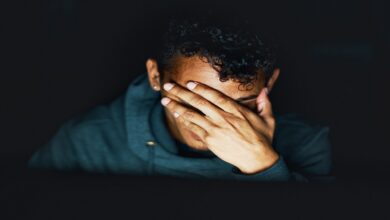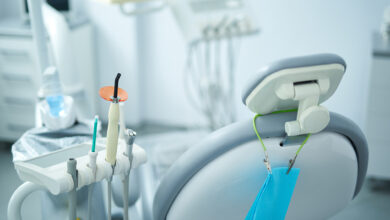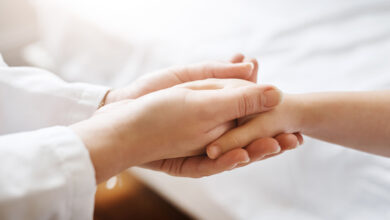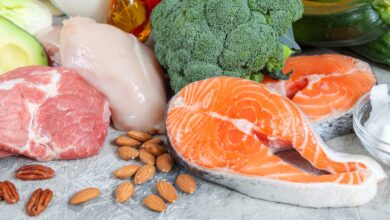How It Works, Uses, Benefits & Side Effects
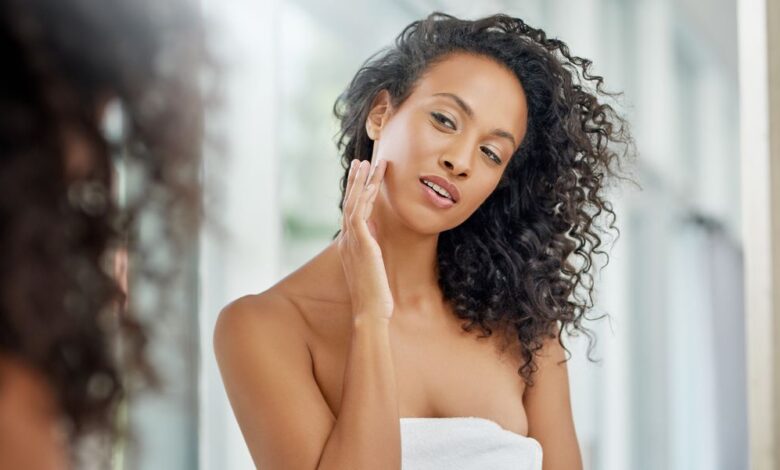
Nearly everyone faces (literally!) an acne breakout from time to time — and the struggle to find the best acne treatment is real. With so many acne products available over the counter, it can be difficult to figure out which ones will work best with your skin type and lifestyle.
To make that process a little easier, we asked top dermatologists about benzoyl peroxide, one of the most common skincare ingredients in acne-fighting formulations. It turns out the ingredient is popular for several reasons: Benzoyl peroxide is safe, effective and affordable. Here’s everything you need to know about the gold-star pimple-preventer.
What is benzoyl peroxide and how does it work to treat acne?
Benzoyl peroxide is a topical bactericidal agent that’s found in many over-the-counter and prescription acne medications. “It not only kills bacteria, it also helps to break up keratin and oily debris within our pores and follicles in our skin, so it basically fights acne by two different mechanisms,” says Ife Rodney, M.D., F.A.A.D., board-certified dermatologist and medical director at Eternal Dermatology in Fulton, Maryland.
On top of that, it reduces inflammation. “Some people have those pustular lesions where you have little puss-filled bumps on your skin and the benzoyl peroxide fights those as well, because the pustules are usually your body’s inflammatory reaction to bacteria within your pores and follicles,” adds Dr. Rodney.
“What separates benzoyl peroxide from other topical antibiotics is you do not develop antibiotic resistance to it so its effects continue and do not wane over time,” says Samer Jaber, M.D., board-certified dermatologist at Washington Square Dermatology in New York City. What’s more, it works quickly — acne often begins to clear up within a week of starting a benzoyl peroxide-based treatment.
How should benzoyl peroxide be used?
Benzoyl peroxide is a multi-purpose tool: It’s effective at getting rid of and preventing all types of acne, whether you’re dealing with whiteheads or blackheads (the results of clogged pores and hair follicles) or inflammatory cysts.
In terms adding benzoyl peroxide into an effective acne skincare routine, it comes in the form of OTC gels, spot treatments or rinse-off cleansers. Dr. Rodney prefers cleansers because they tend to be less drying since they stay on your skin for a smaller amount of time and the motion of rinsing them off helps remove debris. “What’s really important is that you wet your skin first with warm water, massage in the benzoyl peroxide cleanser for 20 seconds and then rinse it off,” she says. “When you leave it on for the 20 seconds, that’s really giving it time to take effect.”
The other thing to keep in mind when selecting a benzoyl peroxide product is that a higher concentration of the ingredient is not necessarily better. In fact, research shows that 2.5%, 5% and 10% formulations are all similarly effective, but the higher percentages are more likely to cause dry or irritated skin. Both Dr. Rodney and Dr. Jaber agree it’s best to start with a lower formulation and slowly work your way up if it doesn’t seem to help.
What are some potential side effects of using benzoyl peroxide?
“Benzoyl peroxide is a very safe and effective acne medication, but it can be very irritating and drying in some patients,” says Dr. Jaber, “so if you have sensitive or rosacea-prone skin, start really gradually with a low dose.” Also, he notes, benzoyl peroxide can bleach fabrics. So apply creams at night, put white sheets on your bed and wear white T-shirts to sleep. If using a benzoyl peroxide cleanser, make sure your towels are white as well.
Is benzoyl peroxide more effective than salicylic acid?
“Benzoyl peroxide and salicylic acid are both great OTC acne-fighting ingredients, but they work differently,” explains Dr. Jaber. “Salicylic acid is an oil-soluble beta-hydroxy acid that works primarily to remove dead skill cells and oil that clog pores — it does not kill bacteria like benzoyl peroxide.”
He says that means salicylic acid can be effective for blackheads and whiteheads, but less effective for cystic, inflammatory acne. Plus, Dr. Rodney says salicylic acid can be so drying that some of her patients end up producing more oil as a result. Both physicians recommend benzoyl peroxide as the first line of treatment for their patients who have acne. Products that contain salicylic acid, glycolic acid, retinoids or sulfur may be eventually added to an acne treatment plan, depending on a person’s needs.
When should you see a doctor for acne?
“If you try OTC medications and are not satisfied with the results, feel self-conscious about your skin or are developing scarring, please see a dermatologist,” advises Dr. Jaber. Especially with scarring and discoloration, the earlier you see a doctor, the better your results will be. “It’s much easier and cheaper to treat acne early and prevent scarring from developing,” says Dr. Jaber.
A board-certified dermatologist can design an individualized acne treatment regimen that suits your needs and includes very effective medicines that aren’t available over the counter. “People think acne is simple, but it’s not,” says Dr. Rodney. “There are so many different types and stages and different products and regimens that work for different individuals.”
The bottom line: Benzoyl peroxide is a safe and effective acne treatment that’s not only widely available but also very affordable. It can help get rid of and prevent all types of acne, including whiteheads, blackheads, acne scarring and inflammatory cystic acne in as little as a week. However, it can be irritating and drying to some — start with a lower formulation and give it a week or so to take effect. If you’re not satisfied with the results, make an appointment with a dermatologist.
This content is created and maintained by a third party, and imported onto this page to help users provide their email addresses. You may be able to find more information about this and similar content at piano.io
Source link


